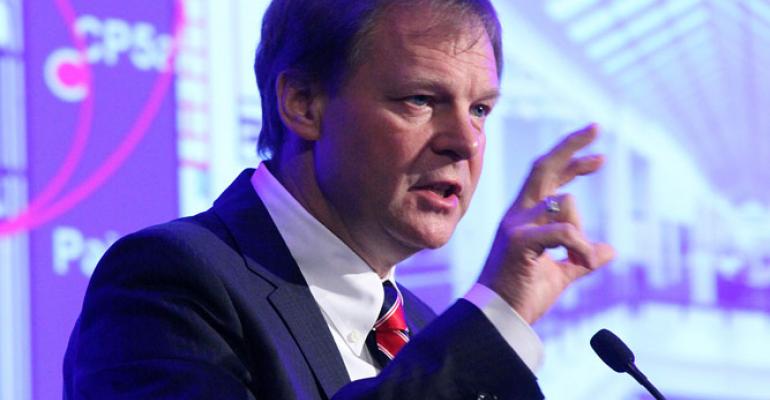TRAVERSE CITY, MI – Volkswagen’s U.S. plant hopes it soon will build a second vehicle.
That potentially would be the midsize cross/utility vehicle that debuted as the CrossBlue concept at the North American International Auto Show in Detroit in January. Currently, the $1 billion VW plant in Chattanooga, TN, produces one model, the Passat sedan.
VW has been promising for months that a decision whether to green-light the vehicle and determine its sourcing strategy is near, with Chattanooga considered the leading candidate for the project.
But no decision has been made on a second car for the plant, says Frank Fischer, who heads the 2.5 million-sq.-ft. (232,257-sq.-m) facility. “With a high level of quality, we are positively looking forward to it. We’ll see what happens.”
The CUV and Passat would share the same platform in the interest of flexible manufacturing and cost saving, he says.
The plant opened in 2010, started a second shift in 2011 and built 117,000 Passats last year.
Locating the facility in Tennessee (after considerable luring and lobbying by the state) was part of VW’s accelerated effort to increase sales in the U.S. When VW management in Germany formulated a strategy to do that, the auto maker had only a 2.8% market share in North America.
“Did our building this plant pay off?” Fischer asks at the Center for Automotive Research’s Management Briefing Seminars here. “Yes.”
The factory has the capacity to build 150,000 vehicles a year. It is in many ways the most modern of plants.
That includes its award-winning environmentally conscious features, such as 36,000 solar modules that meet 12.5% of the plant’s energy needs. “It is the largest solar park at a U.S. auto factory,” Fischer says.
The floor layout is configured so that the different sections, such as the plant shop, body shop and assembly line are close to each other. The office section is right in the middle. “We call it the plant of short distances,” Fischer says.
The production system is set up so that problems are identified and clarified quickly, he says. “That makes it so much better.”
The plant employs 2,500 people. Most are locals, but about 350 others are automotive veterans who come from 37 different nations.



